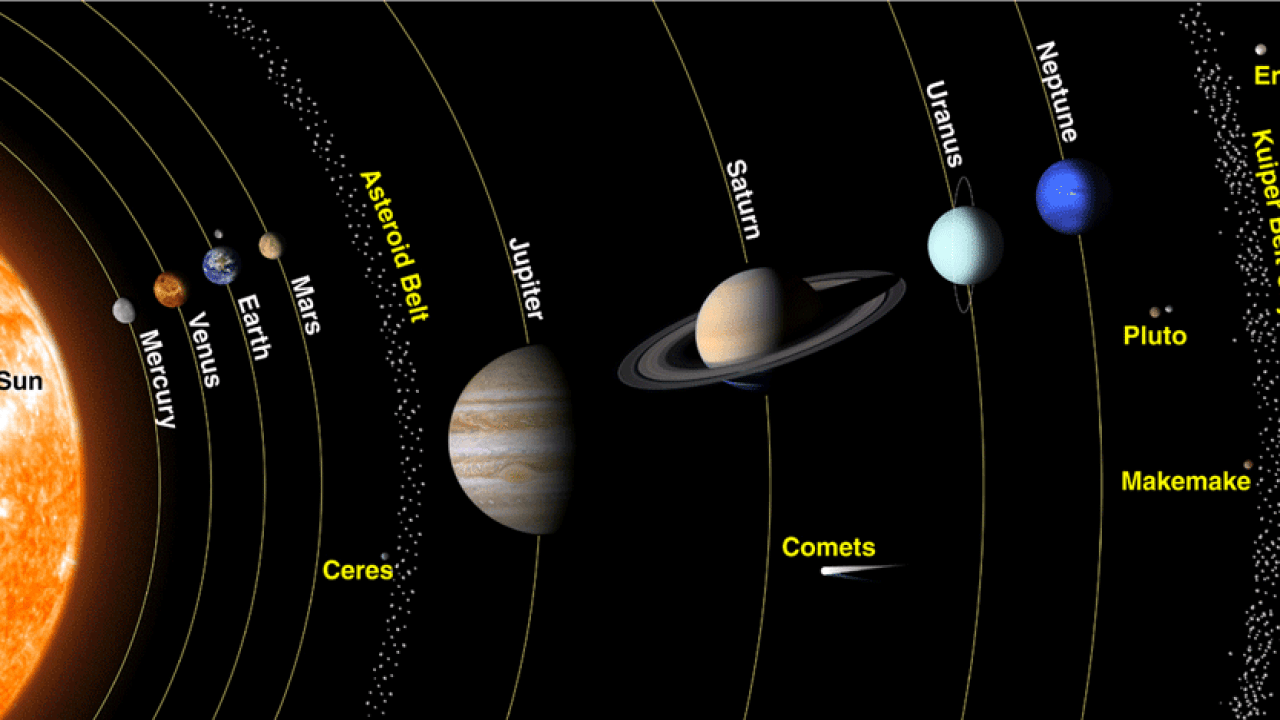The Solar System, our cosmic home, is a fascinating collection of celestial bodies orbiting our Sun. It comprises planets, dwarf planets, moons, asteroids, comets, and other smaller objects.
The Sun: The Heart of Our System
At the center of our Solar System lies the Sun, a massive, luminous ball of plasma. It’s the source of light and heat that sustains life on Earth. The Sun’s immense gravity holds the entire Solar System together.
The Planets: A Diverse Family
Our Solar System has eight planets, categorized into two groups:
Terrestrial Planets:
- Mercury: The smallest and closest planet to the Sun.
- Venus: The hottest planet, known for its thick atmosphere and greenhouse effect.
- Earth: Our home planet, the only known planet to support life.
- Mars: The Red Planet, with its distinctive reddish hue.
Gas Giants:
- Jupiter: The largest planet, known for its Great Red Spot.
- Saturn: Famous for its rings, composed of ice and rock particles.
- Uranus: An ice giant tilted on its side.
- Neptune: The farthest planet from the Sun, known for its intense winds and storms.
Beyond the Planets: Dwarf Planets and Other Objects
- Dwarf Planets: These celestial bodies are smaller than planets but large enough to have a nearly round shape. Notable dwarf planets include Pluto, Ceres, Eris, Makemake, and Haumea.
- Asteroids: Rocky objects, most of which orbit the Sun in the asteroid belt between Mars and Jupiter.
- Comets: Icy bodies that orbit the Sun in highly elliptical orbits, often developing long tails as they approach the Sun.
The Formation of the Solar System
The Solar System formed billions of years ago from a giant cloud of gas and dust known as a solar nebula. As the nebula collapsed under its own gravity, it began to spin faster, forming a disk shape. The material in the center of the disk eventually formed the Sun, while the remaining material formed planets, moons, and other celestial bodies.
Exploring the Cosmos
The exploration of the Solar System has been a major focus of space agencies around the world. Space missions have sent spacecraft to various planets and moons, collecting valuable data and stunning images. These missions have deepened our understanding of the Solar System and its origins.
As technology continues to advance, we can expect even more exciting discoveries about our cosmic neighborhood.
Would you like to delve deeper into a specific aspect of the Solar System, such as the formation of planets, the search for extraterrestrial life, or the future of space exploration?
